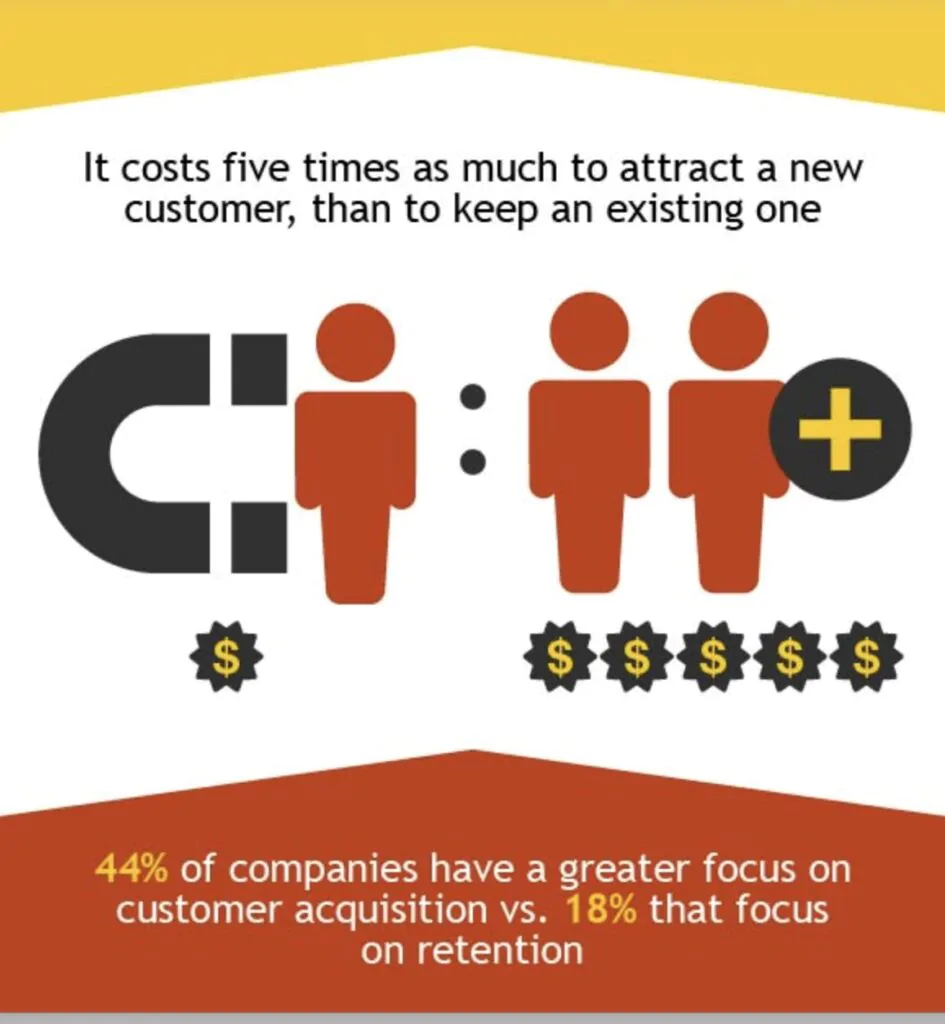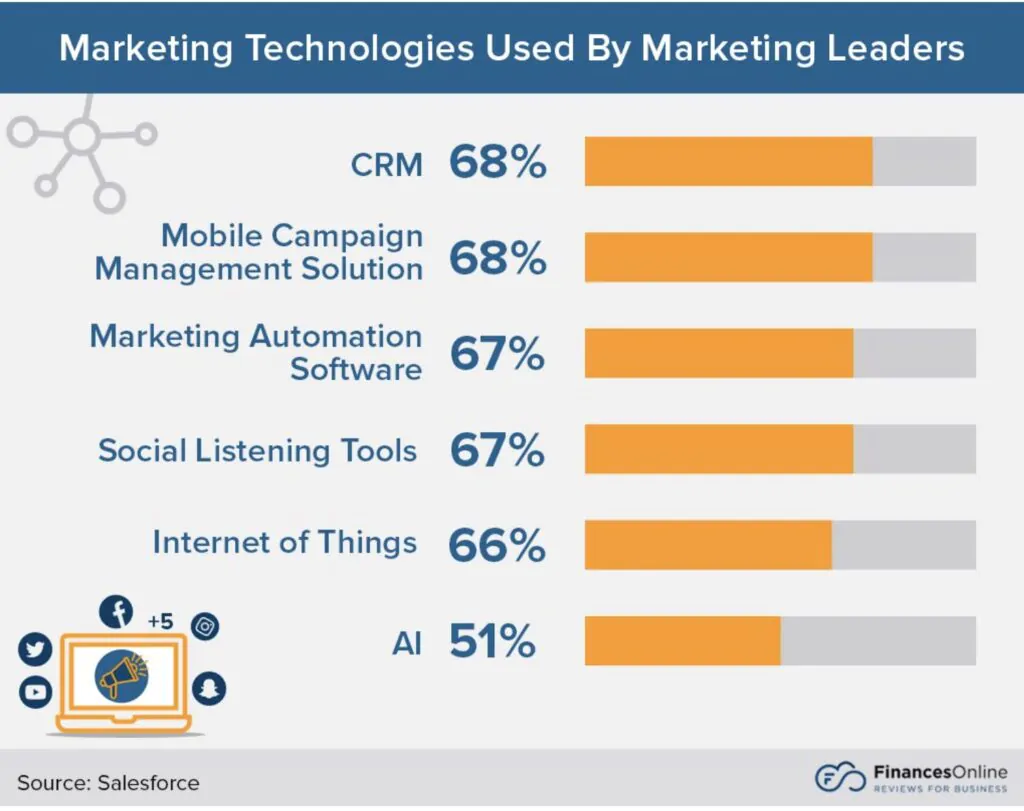Every sales journey is unique – from the first touchpoint to nurturing conversions into loyal customers. That’s why having a strategic lead management process is key to keeping your sales and marketing teams aligned and ensuring no leads are left behind.
Below, we look at what lead management entails and how you can create a strategy for your business.
Key Takeaways:
- Lead management works as a roadmap to ensure your leads aren’t lost along the way because of miscommunications.
- Management begins with lead generation but continues even after you have a conversion.
- The best management strategies are customized to your specific business goals.
Why Is Lead Management Important for Your Business?
Lead management uses technology such as an automated customer relationship management (CRM) system to efficiently collect, track, distribute, and convert leads.
Source: FinancesOnline
Why should your business have a lead management strategy? We outline the three reasons below.
Improves the Customer Experience
A fully satisfied customer contributes 2.6 times as much revenue as a customer that is only slightly satisfied and 14 times as much as a dissatisfied customer. When you track a customer’s journey through your lead management software, your reps will be able to offer a seamless journey through the sales pipeline and improve their overall experience by providing the most relevant information at the right time.
Produces Higher Quality Leads
If you want to shift your business from collecting a large number of leads to identifying and focusing on the quality of leads, establish stricter rules. With a management strategy in place, you customize your lead generation and qualification process to ensure only the most high-quality leads move forward in the sales process.
Saves Time and Resources
Automated lead management tools will streamline your sales and marketing process, reducing the time between that first touchpoint and customer conversion. A streamlined process means fewer wasted resources on low-quality leads and drawn-out processes.
6 Steps to Create an Efficient Lead Management Strategy
Here are six steps to creating a lead management strategy using marketing automation software.
1. Generate and Capture Leads
Lead management begins with generating and capturing leads. Without a set strategy in place, you will bring in dozens of useless leads that have little to no interest in following through with a purchase. However, with management tools in place, you can measure the quality of leads to focus on the channels that bring in the best leads.
Your management strategy should also include a specific set of rules for how your automation system collects and stores the data it receives, such as a customer’s email address, phone number, and name. For example, you should have a centralized database that captures information in a single view customer profile to ensure you minimize duplicate lead information or data errors.
2. Track Leads Through the Sales Funnel
At this point, you will have hundreds or thousands of leads that filtered into your CRM platform – each moving at a different pace and through various marketing processes. If you don’t carefully track your leads, you will easily lose them in their journey.
Some information you should track and store for every lead includes:
- Their demographic and contact information
- How they initially come in contact with your business
- Any additional touchpoints and interactions
- What conversations they have with customer service or sales reps
- Any purchases or downloads they made
Using this information, your agents then create a customized experience that meets each consumer in their sales funnel stage.
3. Qualify Leads Through Lead Scoring
Now that you are tracking leads and increasing your data on each person who interacts with your business, you are ready to begin qualifying those leads. This step is crucial in your lead management process as it ensures you don’t waste time on consumers who don’t meet your brand’s demographic or are not interested in your products.
Lead scoring considers data including a lead’s:
- Interest level
- Time spent on the website
- Previous purchases
- Interactions with sales associates
- Available budget
Every time a consumer meets the criteria of a potential customer, they receive a point. Those leads with the highest points, or greatest scores, are marked as high-quality leads and move forward in the process.
Your lead management should include a specific qualification strategy that contains a list of questions your sales team can ask leads during their scoring process to identify the best leads.
4. Distribute Leads to the Right Sales Teams
Once leads are qualified, you are ready to move them to the sales team for nurturing and conversion. Carefully choosing which team member receives the lead ensures your highest-quality leads are paired with your best agents.
Your automated system can establish rules for distributing leads so that the best agents receive them promptly without any leads lost along the way. Then if the agent follows up within 5 minutes, leads are nine times more likely to convert.
5. Nurture and Convert Leads
During the nurturing process, your agents send their leads relevant information, targeted ads, and customized phone calls to move a consumer to the point of sale. If you managed your leads properly in the previous four steps, your agents would have enough data to pull from to ensure each customer has a personalized process to improve their experience.
The nurturing stage also includes automated messages and emails. However, sending the same messages to all your leads is not very effective. Instead, consider categorizing leads by the information previously collected, then sending targeted emails to specific groups depending on their sales history, interest level, and position in the sales funnel.
6. Retain Loyal Customers
Nurturing your leads doesn’t end with a sale. Instead, continue building a relationship with those customers to encourage them to remain with your brand. One survey showed that 44% of companies have a greater focus on customer acquisition. However, it costs five times as much to attract a new customer than keep an existing one. Additionally, 89% of companies say the customer’s experience is a key factor to encouraging customer loyalty – which you can achieve through a strategic lead management process.

Source: Invesp
Create Your Lead Management Strategy with Automation Software
Are you ready to route your leads across your teams and provide a seamless customer experience?
Use MXTR’s lead management software and never lose another lead again.
Learn more about how our systems can improve your lead management strategies. Schedule a demo today.
Feature Image: istockphoto






